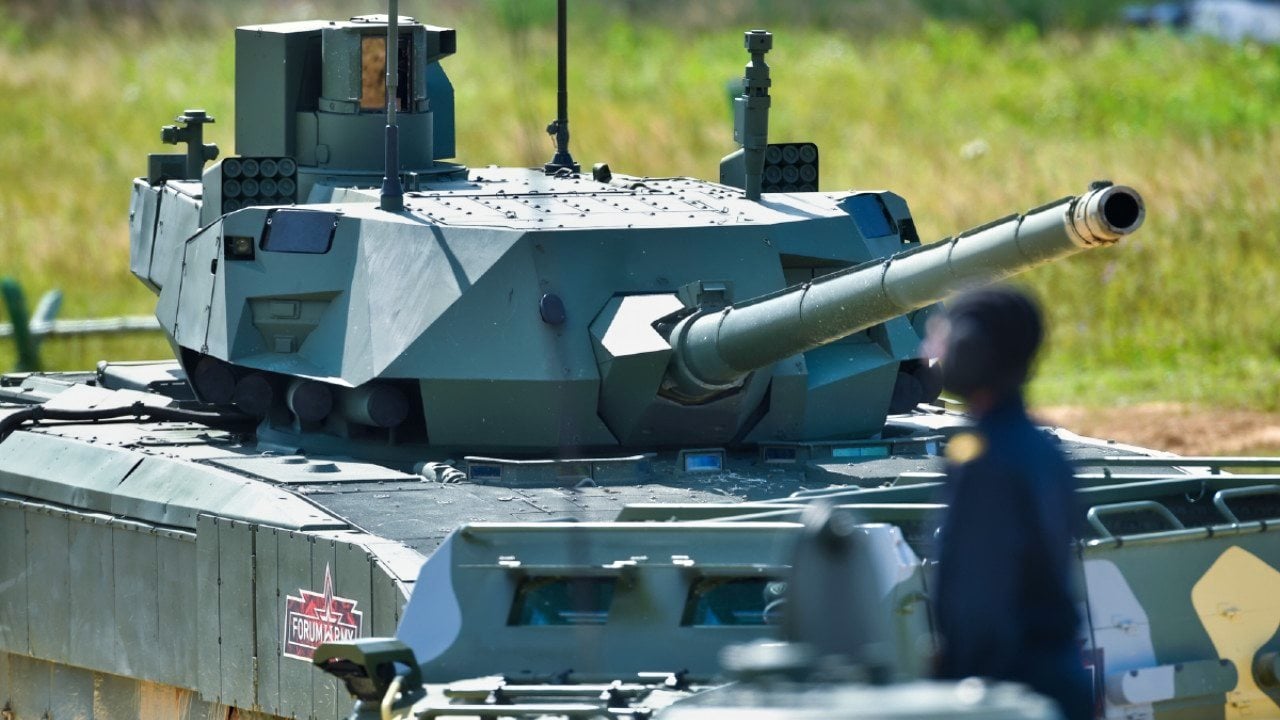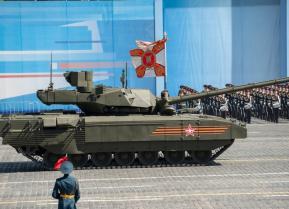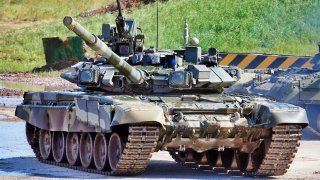2025: The Year Russia Runs Out of Tanks to Fight in Ukraine?
Russia, once boasting the largest fleet of tanks, faces severe depletion of its tank force amid the ongoing conflict in Ukraine. With thousands of tanks lost and dwindling reserves, Russia's strategy of refurbishing older tanks, such as T-72s and T-54/55s, is unsustainable.
Summary and Key Points: Russia, once boasting the largest fleet of tanks, faces severe depletion of its tank force amid the ongoing conflict in Ukraine. With thousands of tanks lost and dwindling reserves, Russia's strategy of refurbishing older tanks, such as T-72s and T-54/55s, is unsustainable.

-The production of new T-90M tanks is limited, and many are merely upgraded T-90As. Additionally, Russia struggles with artillery barrel wear due to high firing rates, exacerbated by using older barrels as temporary fixes. These challenges indicate that Russia's capacity to maintain its armored and artillery forces is critically diminishing.
Russia’s Tank Fleet Faces Critical Depletion Amid Ongoing Conflict in Ukraine"
Before it launched its unprovoked invasion of Ukraine more than two and a half years ago, Russia was reported to have the largest fleet of tanks in the world – at least on paper. Thousands of older platforms, many dating back to the early stages of the Cold War, were maintained in storage, essentially saved for a "rainy day."
Of course, as anyone who has followed the conflict already knows, the Kremlin has seen proverbial downpours that have resulted in the loss of thousands of tanks and has continually gone back to its storage facilities to replenish its losses. Western observers have been noting for the past year that it wasn't a sustainable strategy, as older tanks obviously aren't replaced.
It seems the storage facilities could now be close to empty – at least of vehicles that could be serviceable and able to be returned to combat. As a result, even on paper, Russia's tank force is appearing to be quite lean, according to a report this week from The Economist, which suggested Moscow will reach a "critical point of depletion" by as early as next year.
What About the New Tanks?
Moscow has also appeared to have been playing a numbers game, in some cases passing off refurbished tanks as new. This point was noted that in December Russian Minister of Defense Sergei Shoigu proudly boasted that Russian industry delivered about 1,530 tanks. That would be impressive, were it not for the fact that nearly 85% of the tanks weren't new.
Those tanks consisted of vintage T-72s, as well as T-62s and even significant numbers of T-54/55 series tanks. By contrast, the Kremlin's output of new T-90M main battle tanks (MBTs) was only about 60 to 70 last year. Even as there are reports that the number could be increased to more than 90 annually by next year, Russia can't keep up with the losses. It has lost dozens of tanks monthly.
But there is also more to this picture, the London-based military think-tank the International Institute for Strategic Studies (IISS) also found that most of the T-90Ms are actually upgraded older T-90As. Those stockpiles are also diminishing.
Russia has appointed a new defense minister, and Andrey Belousov's main task at hand may be to increase the production of tanks and other vehicles.
However, as IISS reported, "scaling up production, not just modernisation, is likely to be challenging, even with the current triple working shifts that have been in place since 2022 and a reconfiguration away from civilian manufacturing. To increase numbers, production lines at factories and foundries will have to be either restarted – which has been announced for Omsktransmash – or built from scratch."
As the number of stored tanks is depleted, Russia's ability to maintain its tank force will become increasingly challenging.
Over a Barrel
Another significant problem for Russia is that even if it can somehow maintain its tank force, it will face issues with its artillery. There have been numerous reports of Ukrainian troops literally wearing out the barrels on its artillery systems, but the issue could be even more significant for Moscow as it has been able to maintain a higher rate of fire – thanks in part to receiving millions of rounds of ordnance from North Korea.

The downside is that it has resulted in greater wear and tear on the barrels, and the issue has been so great that there are reports that Russian troops have removed barrels from older towed artillery and installed them on the Kremlin's self-propelled howitzers. Yet, old barrels are at best a stopgap, not a long-term solution.
And like the tanks being pulled from storage, Russia's vast stockpiles of towed artillery won't last forever.
Author Experience and Expertise: Peter Suciu
Peter Suciu is a Michigan-based writer. He has contributed to more than four dozen magazines, newspapers, and websites with over 3,200 published pieces over a twenty-year career in journalism. He regularly writes about military hardware, firearms history, cybersecurity, politics, and international affairs. Peter is also a Contributing Writer for Forbes and Clearance Jobs. You can follow him on Twitter: @PeterSuciu. You can email the author: [email protected].
All images are either Creative Commons and/or Shutterstock.


